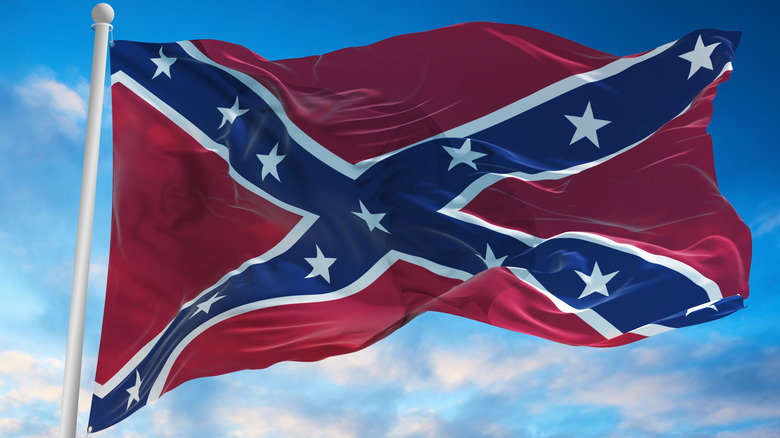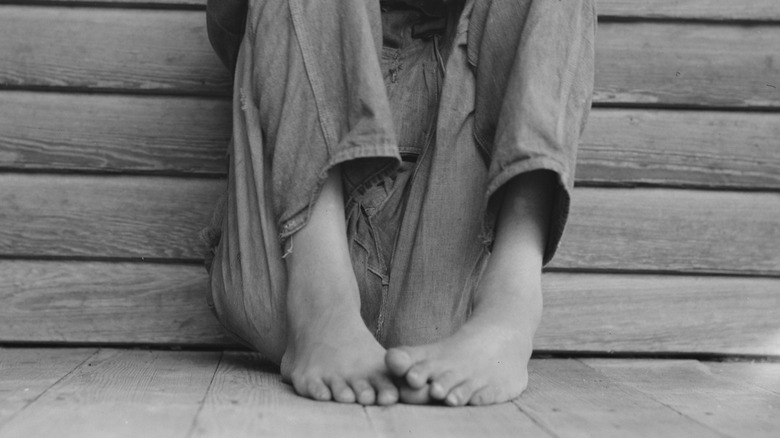Two Boys Uncovered Confederate Treasure In An Unlikely Place
It was on August 31, 1934 when 16-year-old Theodore Jones and 15-year-old Henry Grob happened upon a lost little parcel that would change their lives forever. In the thick of The Great Depression, people were doing anything to keep their minds occupied. For two adventurous teenagers, days dragged on to no end, until one idle activity turned into nothing short of a real adventure. As the American Numismatic Association reports, Jones and Grob were digging a hole in the cellar of an old untenanted house in Baltimore, Maryland late one afternoon. They were reportedly looking to stash some "secret club papers" when something far more valuable presented itself instead.
"Look! Here's a medal," Jones declared as he held up a dirty old coin thickly coated in earth and decay. "You're crazy. That's a $20 gold piece," Grob told his partner. As it turned out, Grob was right. The teens had accidentally exhumed a colossal mass of century-old wealth that would have made The Goonies themselves swoon: 3,558 gold coins dating back to the 1830s, '40s, and '50s stowed away in two massive copper jugs. According to The Baltimore Sun, the conglomeration of coins amassed itself to a total value of $11,200. Today, they'd be worth north of $10 million.
Battle for the bounty
After the boys' sensational discovery went public, claimants started coming forward like ravenous sharks in a pool of chum. The Baltimore Sun reports that the giant mass of cold coins was being held by the Eastern District police station of behalf of the U.S. Gold Act of 1933 which made all gold federal property, so complications started piling up from the get-go. For a while, it seemed as though Henry Grob and Theodore Jones would have nothing to show for their excavation efforts. A dream come true was quickly becoming a dream lost to cold reality.
Their primary legal adversaries were Mary P. Findlay and Elizabeth H. French, two sisters who owned the house within which the coins (which were traced back to an organization called the Confederate Knights of the Golden Circle, as Legends of America reports; Lincoln assassin John Wilkes Booth was a member) were discovered. Two years passed before the coins finally went up for auction at the Lord Baltimore Hotel and sold for $20,000. However, that wasn't the end of the line for Grob and Jones. Thankfully, the boys were rewarded for their due diligence and received $6,000 each (per the American Numismatic Association) for uncovering the long lost treasure that would shatter national headlines in the midst of one of America's most trying and impoverished times (via The Baltimore Sun).
What became of Henry Grob and Theodore Jones?
According to Legends of America, two accounts were set up for Henry Grob and Theodore Jones to hold their money for them until they both reached 21 years of age. Sadly, Grob died before he could collect his share. As The Baltimore Sun reports, he went to work for the Panzer Packing Co. in order to make ends meet as a young man. One evening, he went swimming in the nearby harbor and caught pneumonia. He passed in 1937 after complications with the sickness became more than his body could bear.
However, his mother filed a claim years later and was awarded the sum of money that was designated to go to her son. He once told reporters that he intended to purchase a house for her as soon as the small fortune appeared at his fingertips, so in a sense, his plans were fulfilled in spite of his untimely death. As for Jones, he lived until the age of 57 and worked for the Bethlehem Steele Corp. throughout the majority of his life. Little is known as to what he did with his share of the bounty after it came into his possession (per The Baltimore Sun).


